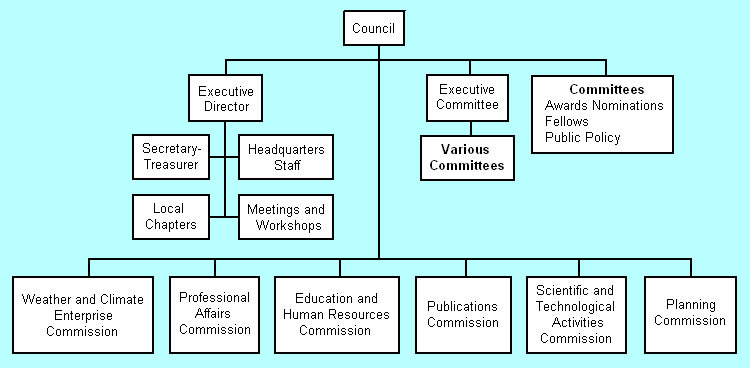User:Milton Beychok/Sandbox
The American Meteorological Society (AMS) promotes the development and dissemination of information and education on the atmospheric and related oceanic and hydrologic sciences and the advancement of their professional applications. The AMS offers an array of undergraduate scholarships and graduate fellowships to students pursuing careers in the atmospheric and related oceanic and hydrologic sciences. It also administers two professional certification programs, the Certified Broadcast Meteorologist (CBM) and Certified Consulting Meteorologist (CCM) programs.[1][2]
The AMS has a staff of 50 people headquartered in Boston, Massachusetts and also has another office in Washington, DC.
History of the AMS
The American Meteorological Society was founded in 1919 by Charles Franklin Brooks of the Blue Hill Observatory in Milton, Massachusetts. Its initial membership came primarily from the U.S. Signal Corps and U.S. Weather Bureau and numbered just less than 600. Its first publication, the Bulletin of the American Meteorological Society, was meant to serve as a supplement to the Monthly Weather Review, which, at the time, was published by the U.S. Weather Bureau.[3]
Many of the initial members were not practicing meteorologists, but after the dues were raised from $1 to $2 in 1922, the weather hobbyists began dropping their membership, and the Society's membership shifted to primarily professionals in the field. The period between 1930 and 1950 was one of significant advancement in the atmospheric sciences, and the AMS made a substantial impact through their publications and the organization of specialized meetings.[3]
During and after World War II, activity in meteorology increased at a phenomenal rate because of the key role it played in support of military activities — both in terms of ground operations and aviation. A large number of meteorologists were trained as part of the wartime effort and, after the war, a substantial number of meteorologists were working in the military and civilian sectors.[3]
The role of the Society as a scientific and professional organization serving the atmospheric and related sciences, which was established so well in the first few decades of the Society's history, has continued to the present. The AMS now publishes many well-respected scientific journals in addition to the Bulletin, and organizes over a dozen scientific conferences each year.[3]
As of 2011, the AMS has a membership of more than 14,000 professionals, professors, students, and weather enthusiasts.[2]
